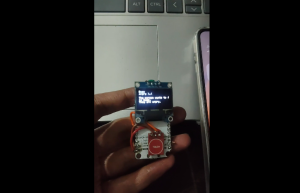Ever since discovering that the universe is expanding, cosmologists have struggled to understand how the universe came to be before the Big Bang. Now, new research from the Harvard-Smithsonian Center for Astrophysics suggests a new method of uncovering the answers to these questions in order to determine which current theory is on the mark.
One of the most promising remnants of the Big Bang is the cosmic microwave background (CMB), which is the glow originating from the Big Bang that has made its way through every area of space. Although at first glance it appears to be smooth and uniform, a more in-depth analysis reveals that it varies, albeit in small amounts. These variations stem from quantum fluctuations that occurred at the beginning of the universe that have subsequently been stretched as the expansion of the universe proceeded.
Although conventional probes into the early moments of the universe search for traces of gravitational waves in the CMB, the new paper suggests an alternative process.
"Here we are proposing a new approach that could allow us to directly reveal the evolutionary history of the primordial universe from astrophysical signals," Xingang Chen, co-author of the study, said in a press release. "This history is unique to each scenario."
Previous studies point to spatial variation in the primordial universe but fail to examine an element of time, making it more difficult to unearth the evolutionary history of the universe.
"Imagine you took the frames of a movie and stacked them all randomly on top of each other. If those frames aren't labeled with a time, you can't put them in order," Chen said. "Did the primordial universe crunch or bang? If you don't know whether the movie is running forward or in reverse, you can't tell the difference."
The new research suggest that these "clocks" exist in the form of heavy particles and can be used to uncover the passage of time present at the universe's birth. These particles, also referred to as "primordial standard clocks," oscillate back and forth like a pendulum in a universal manner and can act as the time labels mentioned in the movie frame analogy.
"Ticks of these primordial standard clocks would create corresponding wiggles in measurements of the cosmic microwave background, whose pattern is unique for each scenario," said Yi Wang, co-author of the study.
Despite the promise of the theory, current data does not possess the accuracy require to detect these small variations, meaning further research will need to be conducted to test its validity.
The findings will be released in the Journal of Cosmology and Astroparticle Physics and the pre-print can be viewed on arXiv.
© 2025 HNGN, All rights reserved. Do not reproduce without permission.








